







































Gain insights into user behavior and customer journey stages through detailed conversion funnel analysis.
 4.9/5
4.9/5
 4.7/5
4.7/5


 Watch Video
Watch Video



This data helps improve your conversion funnel performance and reduces bounce rates—meaning more readers will continue to the next customer journey stage.
Regardless of size or industry, every business deserves access to the best technology to grow and thrive.








































Based on this information, marketers can develop user behavior hypotheses to optimize their conversion funnel.
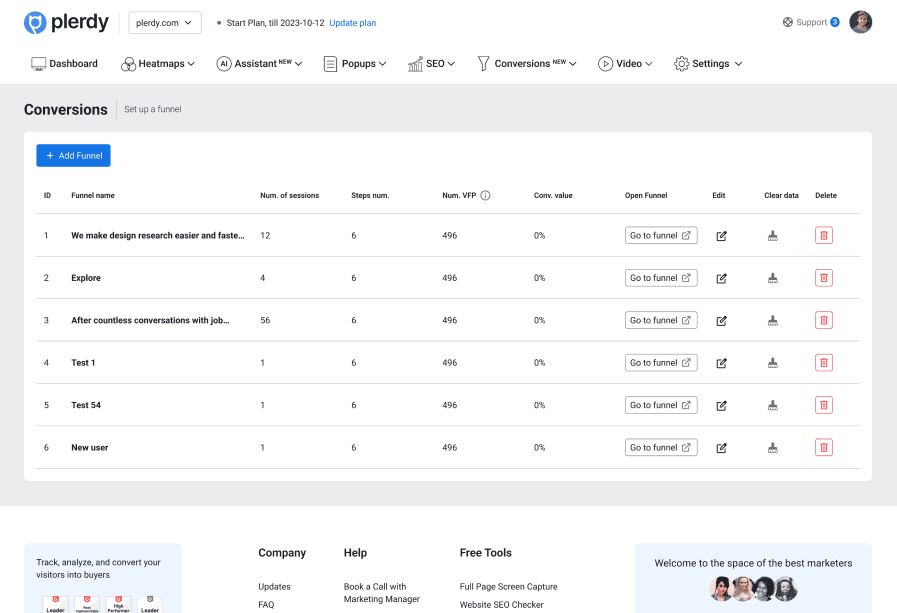
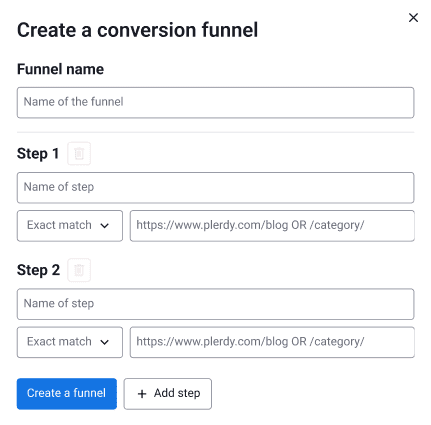

 Category
Category
 Product
Product
 Cart
Cart
 Order
Order
 Thank you page
Thank you page
Create a common funnel with different categories to streamline user behavior analysis.
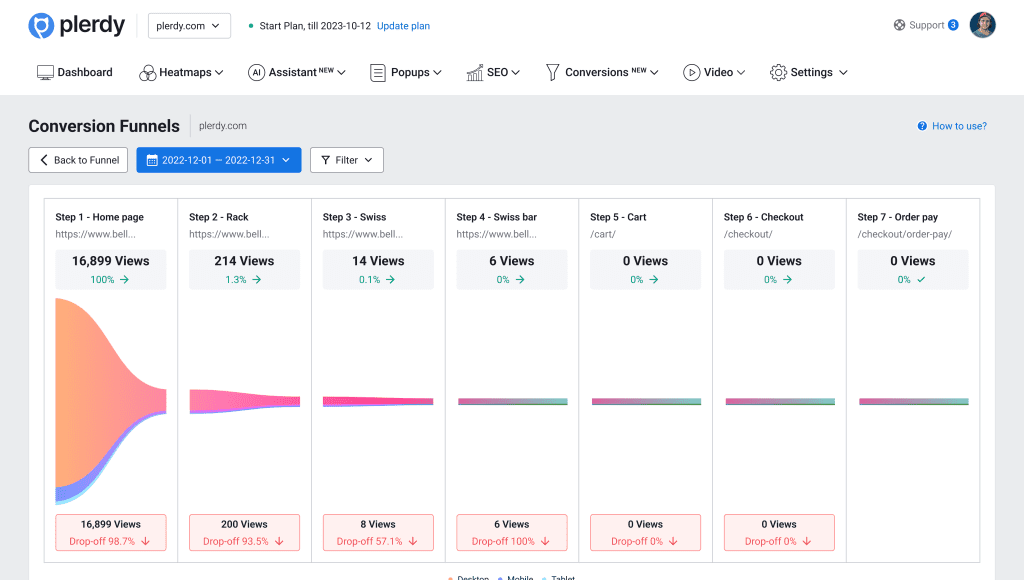
Compared to online stores, service websites typically feature fewer pages. Hence, there are fewer user journey steps. Marketers should analyze their main page and most important landing pages such as Services, Contact Us, or the About Us page. Informational and educational articles should be separated into different funnels based on your goals.
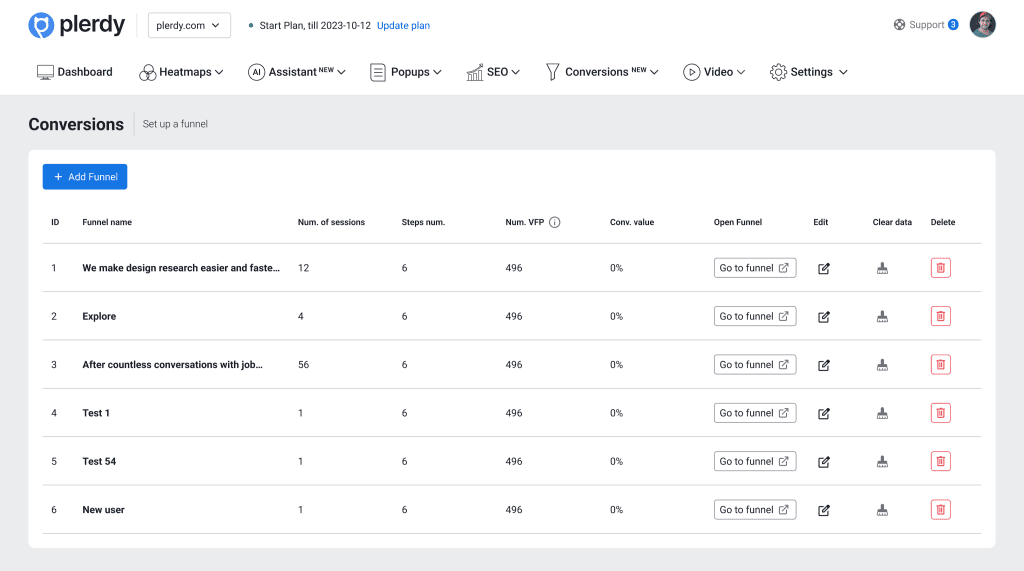
Explore direct, paid, organic, social, and other traffic channels. Discover which works best for your business. Among them, find the traffic channel where visitors bounce. Analyze what channel generates the lowest percentage of users who don’t take the next step toward making a purchase, or why users don’t complete a purchase/conversion. Then pass this task to marketers to optimize your advertising campaign.
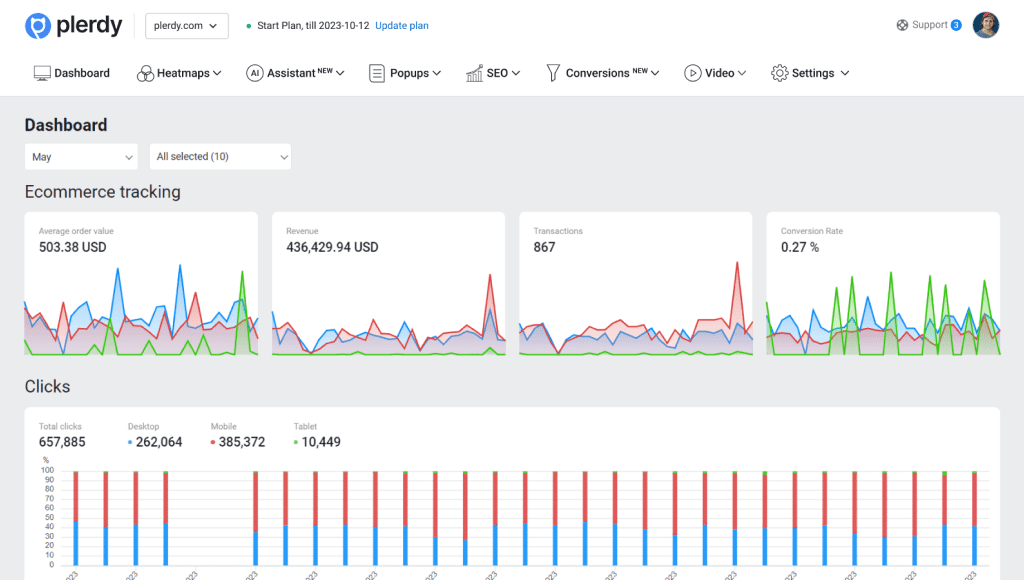
Once you visualize your user's path, examine why users leave your website without proceeding to the next page. Pay attention to clicks, scrolling, and what visitors are hovering over. Next, evaluate elements such as micro-events and user video sessions to discover user behavior at each user journey stage.
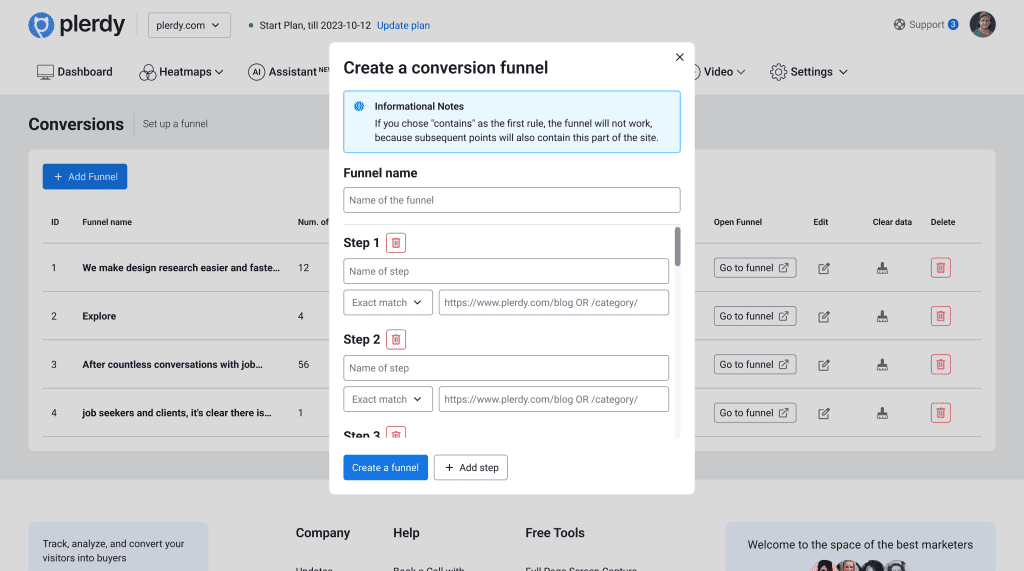
Analyze your startup or SaaS websites with a Plerdy account. Evaluate each step separately to determine where users stumble and how to improve your marketing funnel. Then, carefully build a conversion funnel for your analysis. It includes: Tool description Blog Registration Onboarding steps
Funnel analysis is useful to everyone interested in website conversion, from business owners without a marketing team, to internet marketing experts.
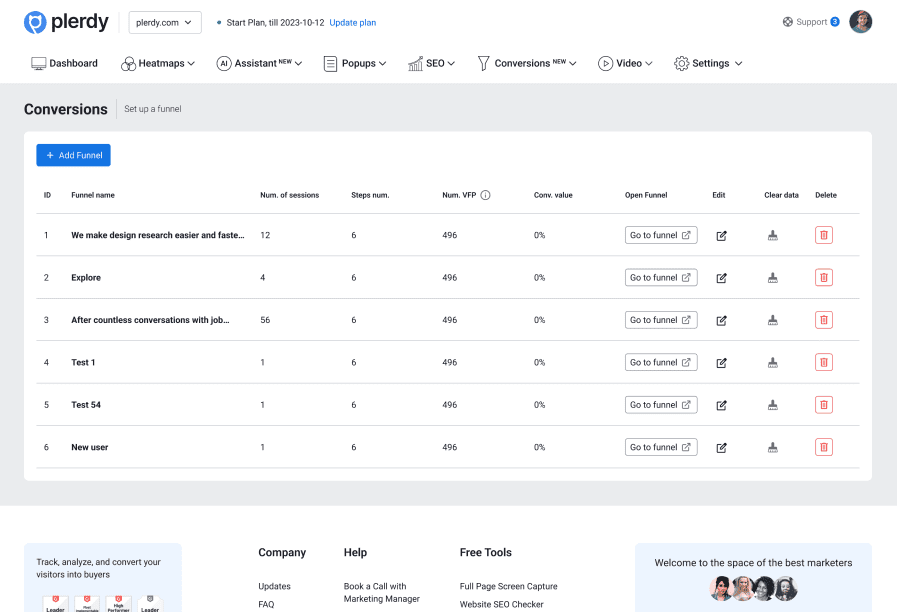

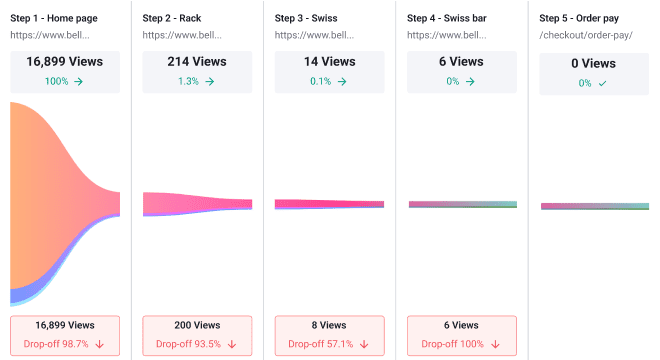
 How website visitors behave at different marketing funnel stages
How website visitors behave at different marketing funnel stages
 Lead generation
Lead generation
 Awareness
Awareness
 Micro- and macro-conversion
Micro- and macro-conversion
 Plerdy shows powerful insights
Plerdy shows powerful insights
Every step of the conversion funnel analysis is important in e-commerce marketing.
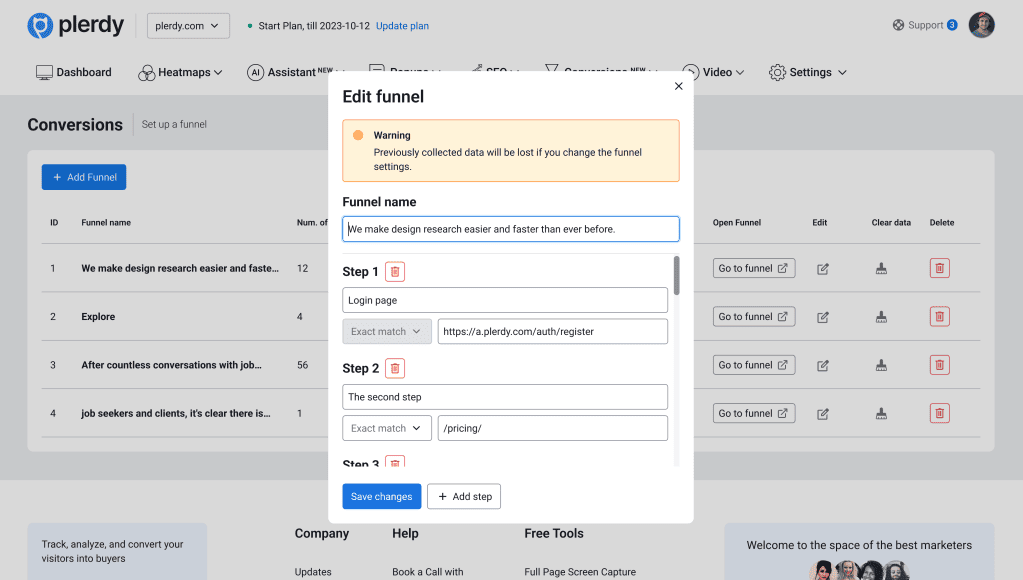
Use a full or partial URL for more precise settings and data segmentation. Plerdy’s funnel analysis tool gives online marketers and website owners optimal control over pages that are in the user path analysis and funnel conversions. It’s easy. With Plerdy, create conversion funnels with a maximum of seven steps.
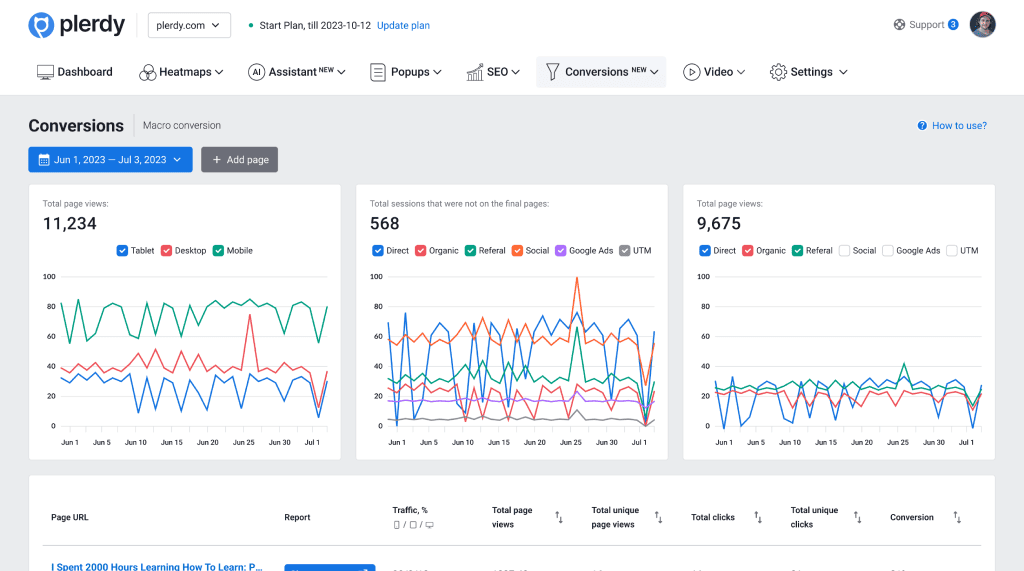
Plerdy funnel analysis gives you data on the percentage of users that leave your website pages at any step. In most cases, this indicates that the user is not your target audience. Meaning that user didn’t find the necessary information they needed. Take a deeper look at Plerdy’s click map, scroll, or video session. Analyze and optimize these steps.
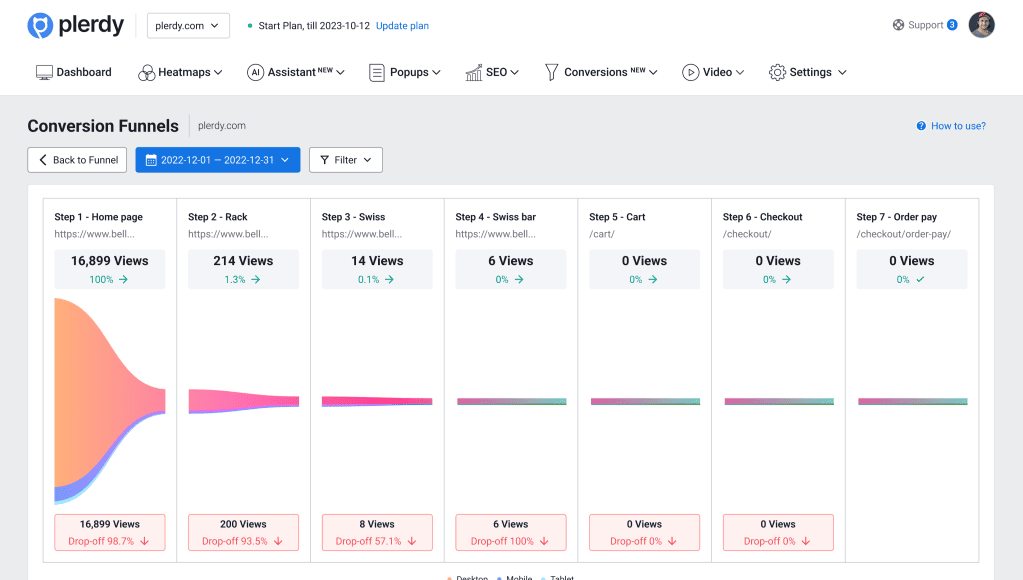
Sometimes certain device optimizations such as mobile are ignored, even though some URLs have more traffic from mobile devices. Analysis is necessary for your website’s sequence of user transitions. Plerdy funnel analysis can help.
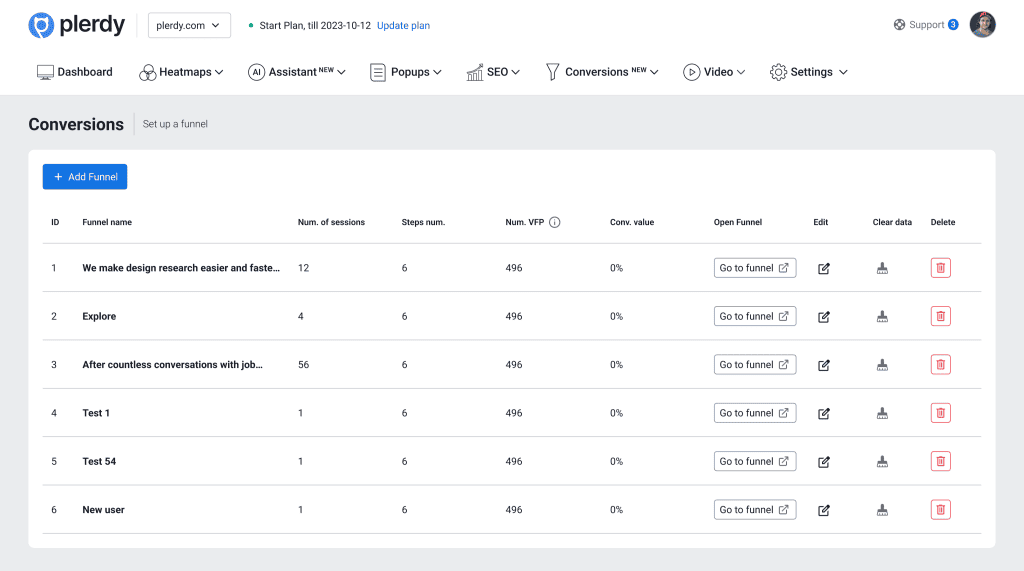
View your conversion funnel data using Plerdy’s horizontal analytical display. It’s crucial to choose a specific time to perform your funnel analysis. Data analysis is best when traffic is higher. Because having more data means better results. Utilizing metrics during a slow month generates different results.
Discover why customers love Plerdy's comprehensive and intuitive web optimization tools, as acclaimed on G2.com
300+ G2 reviews
Create a Plerdy account for free and take your conversion to the next level. Don't lose a single customer.
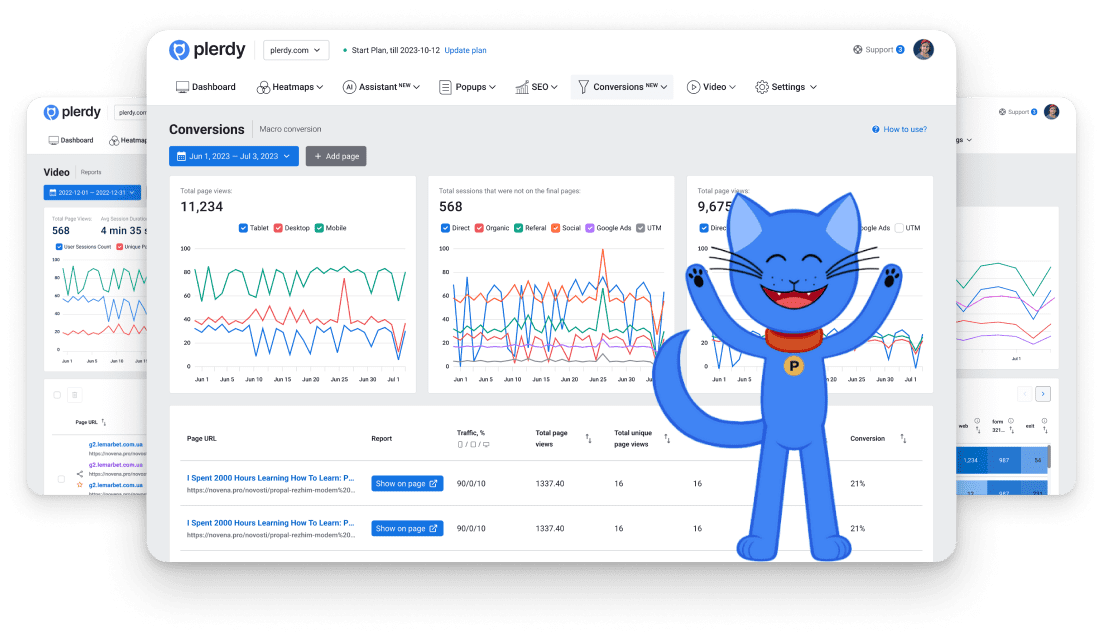
Content for UX designers, SEO specialists, and business owners




